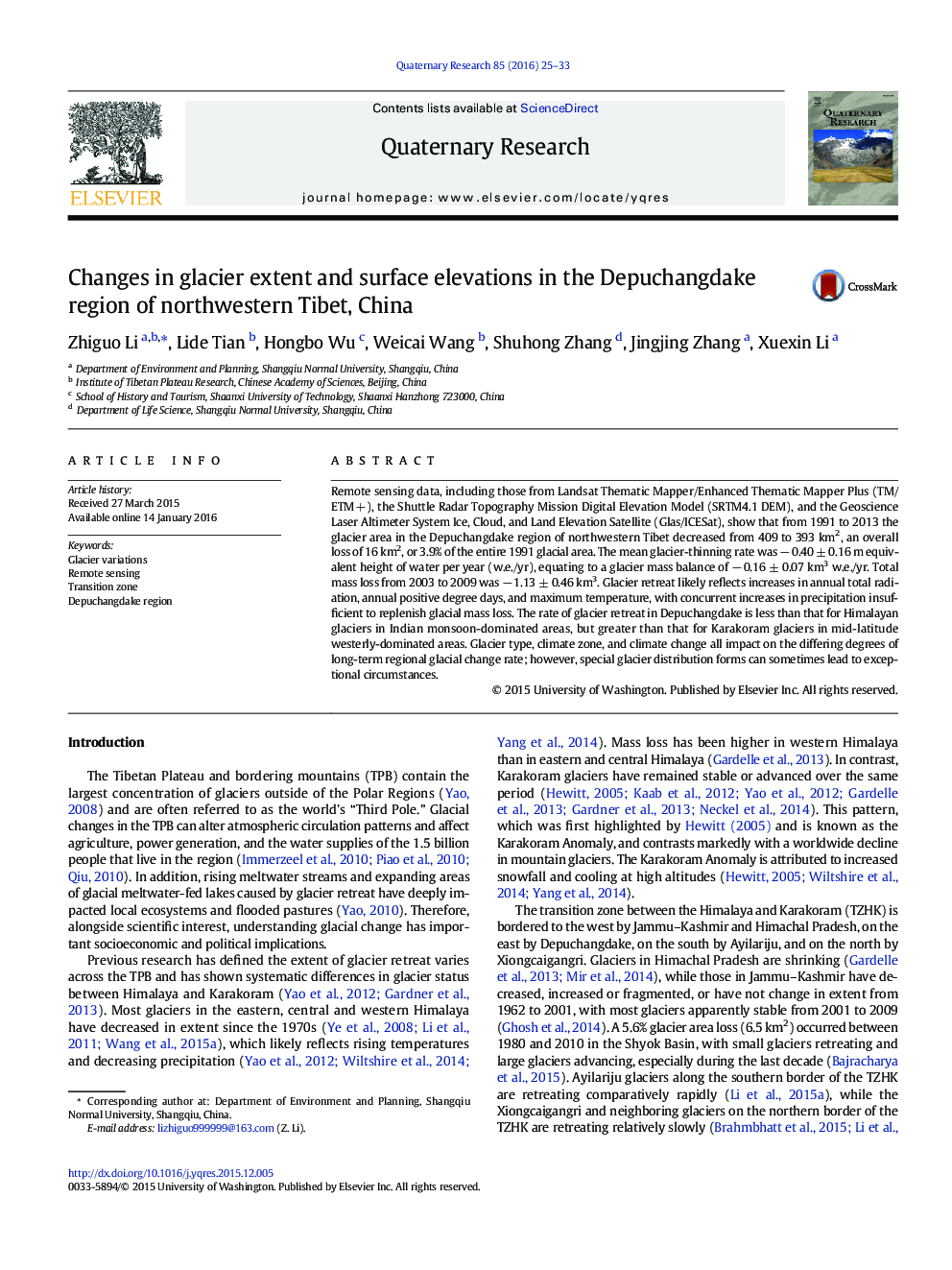| Article ID | Journal | Published Year | Pages | File Type |
|---|---|---|---|---|
| 1045091 | Quaternary Research | 2016 | 9 Pages |
Remote sensing data, including those from Landsat Thematic Mapper/Enhanced Thematic Mapper Plus (TM/ETM +), the Shuttle Radar Topography Mission Digital Elevation Model (SRTM4.1 DEM), and the Geoscience Laser Altimeter System Ice, Cloud, and Land Elevation Satellite (Glas/ICESat), show that from 1991 to 2013 the glacier area in the Depuchangdake region of northwestern Tibet decreased from 409 to 393 km2, an overall loss of 16 km2, or 3.9% of the entire 1991 glacial area. The mean glacier-thinning rate was − 0.40 ± 0.16 m equivalent height of water per year (w.e./yr), equating to a glacier mass balance of − 0.16 ± 0.07 km3 w.e./yr. Total mass loss from 2003 to 2009 was − 1.13 ± 0.46 km3. Glacier retreat likely reflects increases in annual total radiation, annual positive degree days, and maximum temperature, with concurrent increases in precipitation insufficient to replenish glacial mass loss. The rate of glacier retreat in Depuchangdake is less than that for Himalayan glaciers in Indian monsoon-dominated areas, but greater than that for Karakoram glaciers in mid-latitude westerly-dominated areas. Glacier type, climate zone, and climate change all impact on the differing degrees of long-term regional glacial change rate; however, special glacier distribution forms can sometimes lead to exceptional circumstances.
